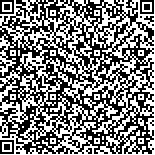| 摘要: |
| 西施舌(Coelomactra antiquata)浮游幼虫EST 序列拼接获得组蛋白H2A ORF 及其两翼的非编码区, 在ORF 两翼设计引物Can-H2AF 和Can-H2AR, 扩增H2A 基因片段; 从nad6 3′端和nad1 5′端设计引物, 扩增两基因区域DNA 序列, 测序并进行核苷酸序列差异分析, 研究漳州西施舌分化水平。结果: 共获得西施舌3 个群体H2A 基因606bp 或616bp 基因区DNA 片段23 条, 检测到9 种基因型(Gen)。西施舌漳州群体H2A 基因AT 含量(51.51%)高于日照、北海群体AT 含量(50.58%); 序列比对分析显示,简约信息位点占4.05%。基于H2A 基因的漳州群体与日照/北海混合群体间遗传距离平均为0.044, 漳州群体, 混合群体内遗传距离分别为0.003 和0.004, 群体间与群体内遗传距离之比为11~14.7; AMOVA分析结果显示, 漳州群体和混合群体间发生了极显著遗传分化(FST=0.937, P<0.01)。从nad6~nad1片段中共检出7 种单倍型(Hap), 漳州群体与日照群体无共享单倍型, 基于nad6~nad1的漳州群体与日照群体间遗传距离为0.199~0.202, 群体间与群体内遗传距离之比50~66, 两个群体间nad1 多肽链一级结构存在极大差异, 有9 个位点的氨基酸不同, 日照西施舌缺失6 个氨基酸。线粒体DNA 显示西施舌漳州与日照群体发生了明显的遗传分化。 |
| 关键词: 西施舌(Coelomactra antiquata) 组蛋白H2A 基因 nad6-nad1区域 遗传分化 |
| DOI:10.11759/hykx20130803001 |
| 分类号: |
| 基金项目:江苏省自然科学基金项目(BK20131210); 国家自然科学基金项目(40906067); 连云港科技局国际科技合作项目(GH1204); 江苏省“青蓝工程”人才基金项目(苏教师[2010]27 号); 江苏高校优势学科建设工程资助项目(PAPD); 江苏省科技厅前瞻性研究项目(BE2014335); 江苏省农业自主创新资金项目(CX(13)2041) |
|
| Comparative studies of the histone H2A gene and nad6-nad1 fragment sequences in three populations of Coelomactra antiquata |
|
|
| Abstract: |
| The H2A ORF and its two wings untranslated region of Coelomactra antiquata planktonic larvae were obtained by splicing EST sequences. Histone PCR primers (Can-H2AF and Can-H2AR) were designed in two wing sequences of the ORF. H2A fragments (including coding and uncoding regions) were amplified and sequenced. The DNA regions between nad6 and nad1 gene were amplified, and the nucleotide sequence divergence of H2A gene and nad6-nad1 fragment was analyzed. We obtained 23 DNA fragments of H2A gene, and the size of the fragments is 606 bp (RZ, BH populations) or 616 bp (ZZ population). Nine kinds of genotypes (Gen) were detected from three populations of C. antiquata. The AT content (51.51%) of H2A gene in ZZ population is higher than that (50.58%) of RZ and BH populations. H2A gene sequence alignment analysis of nine genotypes showed that there are 616 comparison sites, and the parsimony informative sites accounted for 4.05%. There are 23 variable sites shared by Zhangzhou population, 27 variable sites shared by Beihai and Rizhao populations. The average genetic distance between mixed population and ZZ population was 0.044. It is 0.003 within mixed populations and 0.004 within ZZ population. The genetic distance ratio between intergroup and intrapopulation is 11~14.7; AMOVA analysis showed that there was significant genetic differentiation (FST = 0.937, P<0.01) between Zhangzhou groups and mixed groups (RZ and BH). The cumula 2-parmeter distance ratio interpopulation (Rizhao and Zhangzhou) to intrapopulation based on nad6-nad1 is 50~66, it also suggested high level genetic differentiation in Zhangzhou population of C. antiquata. |
| Key words: Coelomactra antiquata histone H2A gene nad6-nad1 fragment genetic differentiation |
